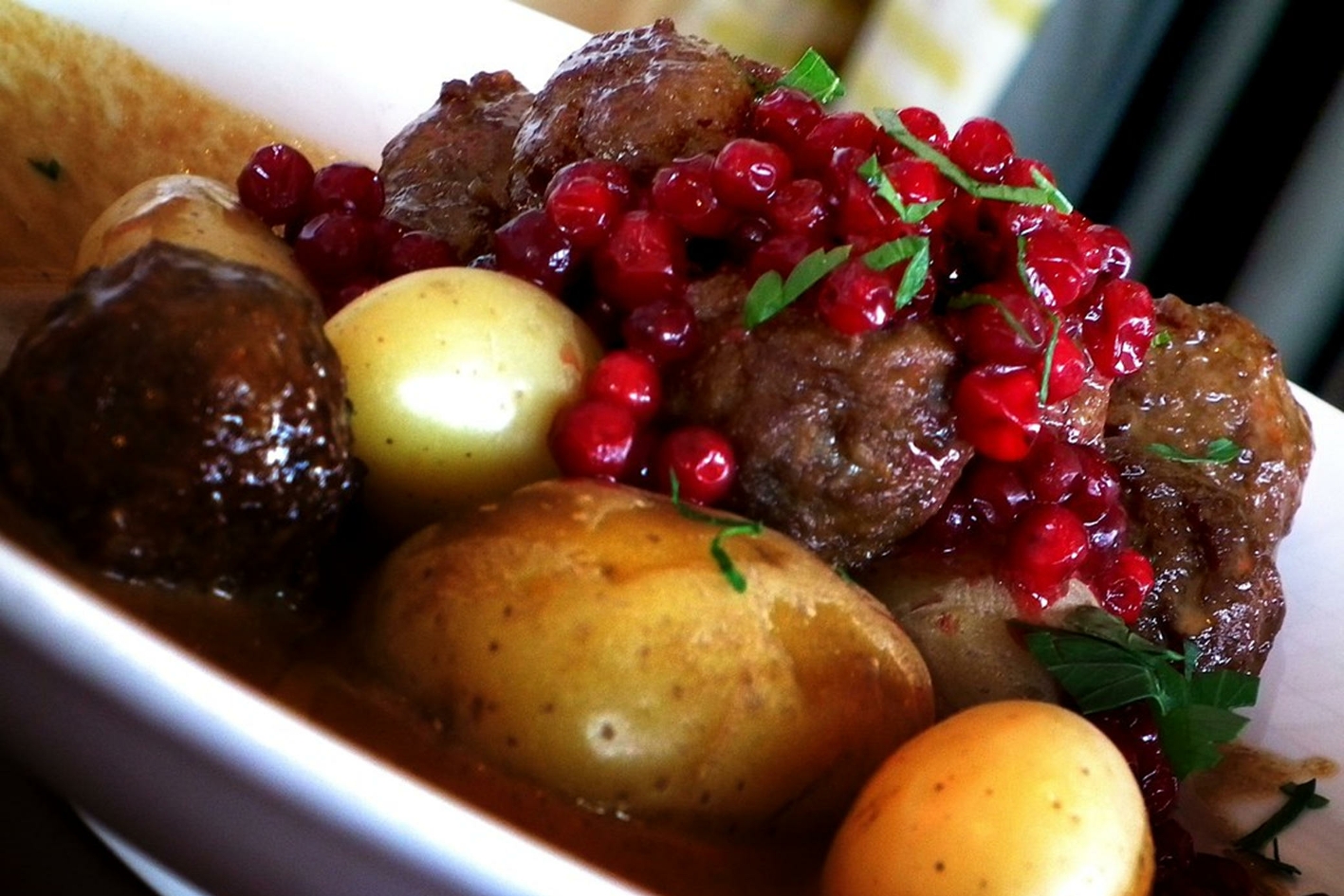
The informal national dish
" we never get tired of them! "
Meatballs [Swedish: köttbullar] are indisputably the informal national dish in Sweden. As agreement on a national dish has yet to be reached meatballs fulfil an important function. They are eaten everywhere: at home and parties; in local and fine dining restaurants, hospitals and prisons. Everybody is eating them regardless of age and never get tired of them.
The origin of the meatball is not known. However, it is historically proven that meatballs were served at the court of Richard II in England around the 14th century. Flavoured meatball recipes are found in cookbooks from Baghdad though they did not last long. Meatballs became common in Sweden during the middle of the 19th century.
The first known use of the word “meatball” came in 1775 in a cookbook written by Cajsa Warg. It was Sweden’s first cookbook written by a female chef, initially under a pseudonym, because almost all chefs in those days were men. Today when we talk about Swedish meatballs, we refer to a recipe developed by the legendary Swedish chef and restaurateur Tore Wretman, who founded the Bailliage of Sweden in 1959.
Meatballs are classified as home cooking and are traditionally served with potatoes or mashed potatoes, creamy brown gravy, pickled cucumbers and lingonberries. The pickled cucumbers must contain Swedish vinegar and fresh lingonberries must be mixed with sugar but not cooked. A meatball weighs about 15 grams whilst the delicatessen meatball weighs only 10 grams. The larger one is often eaten at home while the smaller one is found on the “Swedish smørgasbord” during Christmas, Easter and Midsummer. As previously stated, we never get tired of them!
The meatball consists of ground beef and ground pork in different proportions. The further north in Sweden the more beef. Whilst in the southern part more pork. Other ingredients include yellow onion, breadcrumbs, eggs, spices and cream. The most talented chefs also recommend that soda water or crushed ice is added along with salt when the ground meat is mixed. It binds the protein in the ground meat which makes the meatballs juicier and tastier.
Naturally, there are variations. In northern Lapland reindeer is preferred. Vegetarians and vegans have their variation. A variety of ready-made meatballs can be purchased in the supermarket. And of course, they have been made famous around the world via the in-store restaurants of a Swedish flat-packed furniture company!
Nevertheless, despite the ready-made versions, homemade meatballs have recently gained in popularity despite the longer preparation and cooking time.
A good restaurant would never serve industrially prepared meatballs. Even in the kitchens of hospitals and schools, meatballs are rolled with joy. A food establishment that takes care of its guests has meatballs on the menu every day.
Maître Rôtisseur Magnus Åkerström, Sweden’s Young Chef of the Year 2017, remembers the time he worked in the Restaurant Stadshuskällaren. The chefs rolled about 1,000 kilos of meatballs for their famous Christmas table, approximately 60,000 pieces or at least five per guest despite the buffet having many other dishes.
In addition to how often during the year we eat meatballs, we also celebrate ‘Meatball Day’ on August 23rd every year. To my knowledge there is only one major Swedish event where the meatballs have not been served, the famous Nobel Prize Dinner. Yet!
Catarina Offe
Conseiller Gastronomique
Translation into English from the original Swedish by Margareta Henry, Chargée de Missions Honoraire